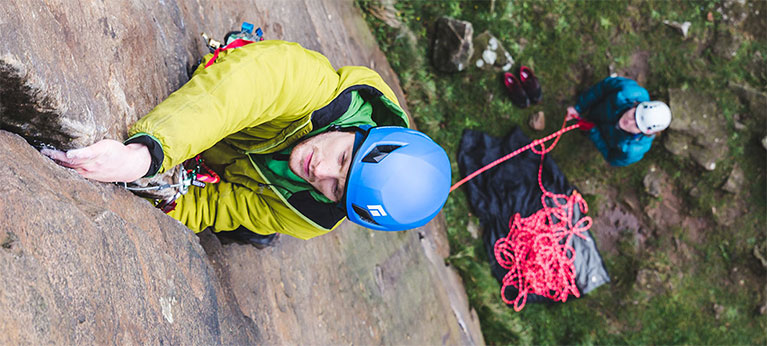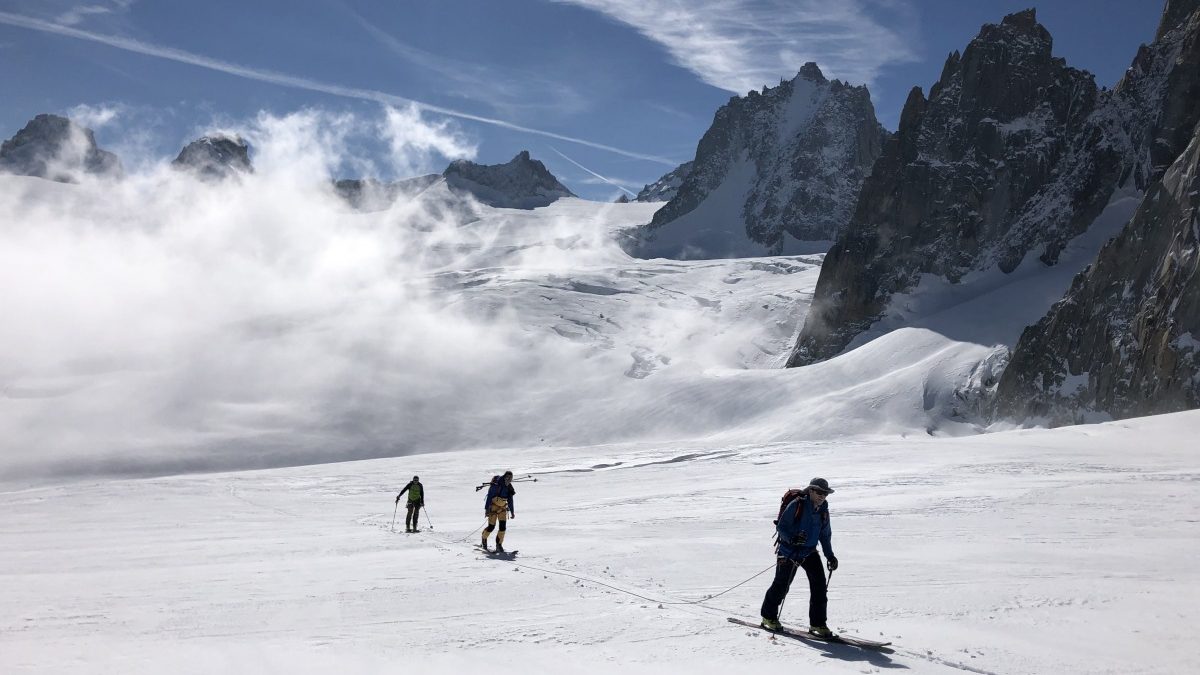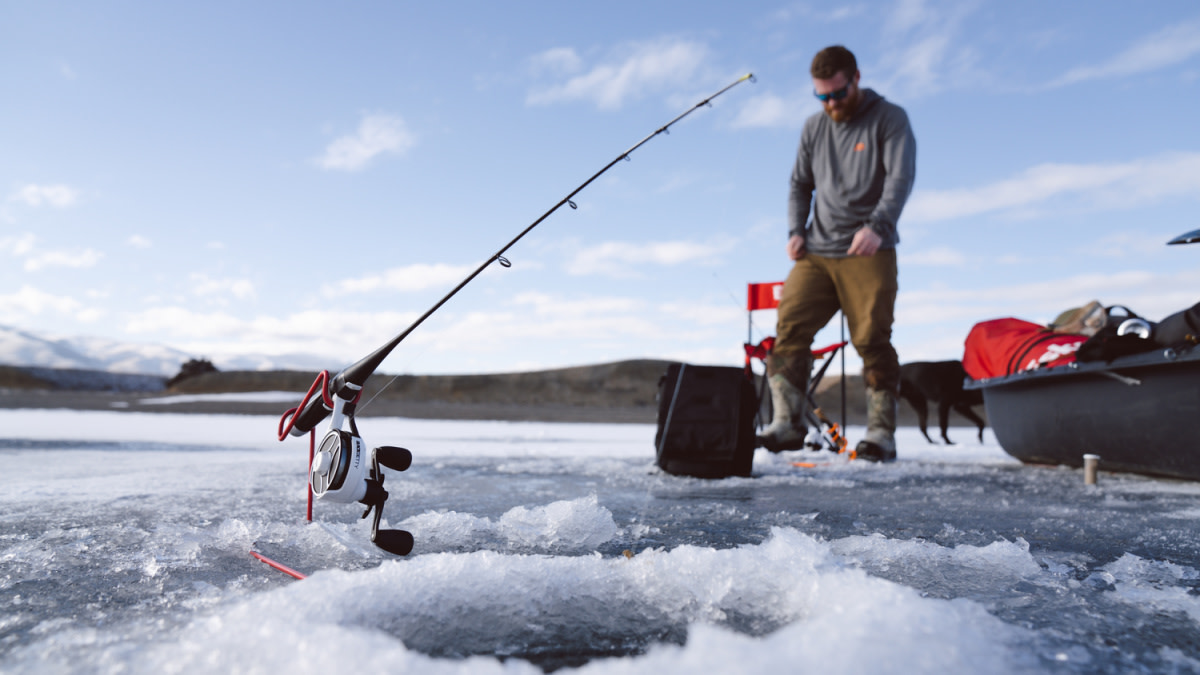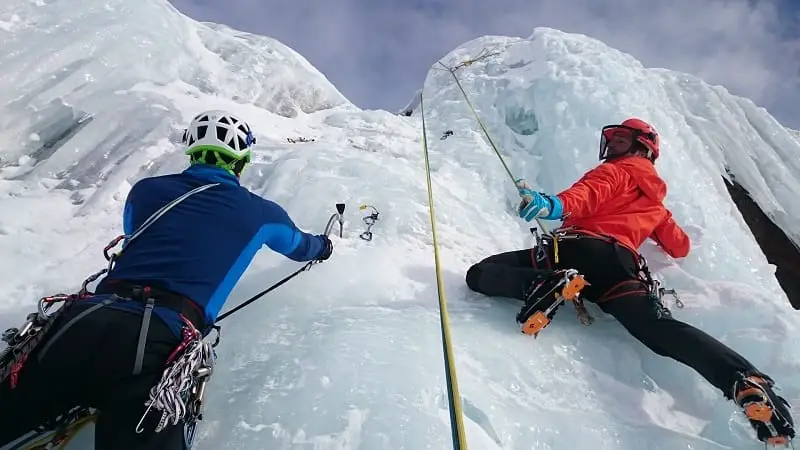Are Wet and Icy Ropes Dangerous?
The simple answer is yes, they certainly can be. There are a couple of reasons why you want to keep your rope as dry as possible while climbing. Reason 1: Wet ropes lose their dynamic (stretchy) properties thereby decreasing the overall strength of the rope. The reason why is because water elongates your rope. Tests show that wet ropes, when under load, lose 30% of their dynamic properties. Reason 2: A wet rope can also increase forces when loaded, like when you take a lead fall. Ropes are designed to elongate in order to absorb the impacts climbers apply to them. Again, testing shows that impact forces increase from 5-10%. Now that may not sound like much, but combine that with your decrease in strength and it adds up quick which equals a much larger problem. Reason 3: Your belay device doesn’t function as well. Wet and icy ropes makes them more slippery, or even worse, they ropes get frozen stiff and will no longer pass through your belay device. All belay devices create friction to help brake and arrest a fall. As you’re wrestling to pull the rope through your device on a frozen section, unwanted slack could build up in system. If all of the sudden the climber falls with that extra slack out, it’s equivalent to taking a fall on a static rope…Can you say, “Ouch!” So what can you do to keep the rope dry? 1. Use a rope bag or tarp. This will help keep the rope clean from snow, dirt, debris and in a quick rainstorm. Fold it up like a burrito and keep it covered as much as possible, stuff it in your pack, cover it with your jacket…whatever you need to do. Check out Sterling's Rope Tarp Plus. 2. Buy a dry-treated rope.If you plan on ice or alpine climbing or live in a chronically wet environment (ahem…as all of you East Coasters know all too well), buy a rope with a dry treatment. A dry-treated rope has a coating applied to it that helps to prevent it from absorbing water. UIAA has a new certification for water-repellent ropes that dictates ropes cannot absorb more than 5% of water in order to pass the standard. Check out Sterling’s new DryXP™ ropes that are certified to the UIAA standard. So, it’s too late…rope is wet, what’s the best way to dry it? Choose a place that is: Cool, Airy and Shady.The ideal place is indoors, out of direct sunlight and away from any heat source. Why? The sun’s UV rays cause damage to the fibers of the rope, as does any type of heat source. Expose the rope surface.Uncoil your rope and lay it out so you expose as much of the surface area of the sheath as possible. Create airflow.Turn on a fan, open a window, create airflow to help speed the drying time. Rest and climb assured that when all is said and done, your rope recovers almost completely when dried under normal conditions. Chicks Climbing and Skiing is dedicated to educating and empowering women through mountain sports, developing community, and fostering environmental stewardship. Their all-women’s ice climbing programs were the first in the country and they’ve now expanded to offering rock, alpine and skiing events. Sterling Rope is their Official Rope Sponsor. To learn more about Chicks visit their website at www.chickswithpicks.net Related Stories 25 Years, 25 Partners. Profile #3: Kyle McCabe In honor of Sterling’s 25 years of making the world’s finest rope and cord, we are celebrating our partners who have helped us get to where we are today. We will be profiling 25 dealers and partners across the industries we Veteran's Epeditions: Summer Missions in the Pacific Northwest For the past three summers, Veterans Expeditions (VetEx) has run a Pacific Northwest climbing series where teams of veterans have tackeled many of the classic climbs in the area including Glacier Peak, Eldorado Peak What goes into the DryXP UIAA water Repellent Treatment I hope you can appreciate that we are not at liberty to disclose too much technical detail given the heavy R&D investment we've made ad the proprietary nature of the entire process. I suspect you'd get a similar Back to Sterling Solid

Climbing Ropes Buying Guide

Climbing Ropes: Maintenance, Dangers and Precautions

Slim Versatility - Edelrid Rap Line Protect Review - The Backcountry Ski Touring Blog

Plastic pollution in the Arctic Nature Reviews Earth & Environment

10 Tools For Staying Alive while Ice Fishing

Sterling Solid - Page 2

Rope Burn: First Aid, Treatment, Signs of Infection, Recovery

Dry Treated Rope: Is the Treatment Worth It for Climbing?

What is Ice Climbing? A Guide Takes a Swing at Answering